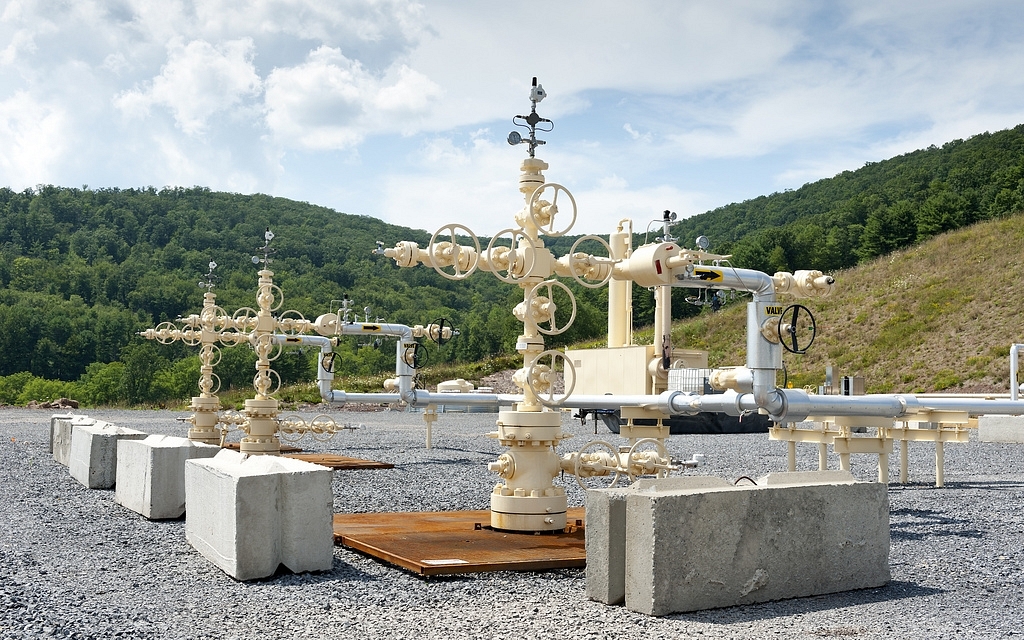Politics
Explained: Why This Tamil Nadu Village Is Jittery About Hydrocarbon Exploration
- The Neduvasal Hydrocarbon exploration project has been under controversy for quite a while now. But exactly what is the controversy?

A Shale Gas Well. (Photo Credit: Max Philips)
The Government of India’s Hydrocarbaon exctraction project at Neduvasal in the Pudukottai district of Tamil Nadu has been the cause of several protests in the recent past. The bone of contention behind the protests is that the project will render agricultural land useless by contaminating ground water availability.
The project comes under a government policy known as ‘Discovered Small Field’ that was launched in 2015.Under this, an area of 10 square kilometre has been awarded in Neduvasal in Tamil Nadu and 10.4 square kilometre in Karaikal, Puducherry. Approximately 4,30,000 metric tonne of oil and oil equivalent gas is expected to be explored in these two areas. The project is under the ambit of the Hydrocarbon Exploration and Licencing Policy (HELP) that replaced the 15-year old New Exploration Licensing Policy (NELP). While both policies permit Foreign Direct Investment (FDI) and private sector participation, the core difference between the two is that HELP issues a common licence to all hydrocarbons including methane, oil and gas. Neduvasal was given to Danageree-based GEM Laboratories while Karaikal is with the Public Sector Bharat Petrosources Limited.
Now, why is there a controversy?
1. The government has not exactly specified where in Neduvasal is the exploration going to take place. It simply says Neduvasal.
2. The Government of Tamil Nadu had stopped all methane exploration projects in 2015 in the Kaveri delta region. However, as per a report in The News Minute, the project is aimed at exploration of only Crude Petroleum.
3. There is no clarity on how the crude oil will be extracted. There are concerns that Gas Injection, a process where gas is pumped into the area to increase the pressure to push the crude oil out may be carried out in the region. Villagers are also wary of hydraulic fracturing, also known as hydro-fracking where water, sand and chemicals are pumped into the ground to exert pressure and release the methane.
4. Villagers are apprehensive of the repercussions of the project. They fear that either the ground may be contaminated by the exploration, or it could cause a disturbance in the ground water-sea water interface, resulting in increased salinity of the ground water. Both of these would render the land unfit for agriculture, something the village is heavily dependent on.
The Government of India aims to use the HELP to reduce India’s crude imports by 10 per cent by 2022. It aims to net a revenue of Rs 9,300 crore from this project out of which the state is expected to get Rs 5,000 crore.
Support Swarajya's 50 Ground Reports Project & Sponsor A Story
Every general election Swarajya does a 50 ground reports project.
Aimed only at serious readers and those who appreciate the nuances of political undercurrents, the project provides a sense of India's electoral landscape. As you know, these reports are produced after considerable investment of travel, time and effort on the ground.
This time too we've kicked off the project in style and have covered over 30 constituencies already. If you're someone who appreciates such work and have enjoyed our coverage please consider sponsoring a ground report for just Rs 2999 to Rs 19,999 - it goes a long way in helping us produce more quality reportage.
You can also back this project by becoming a subscriber for as little as Rs 999 - so do click on this links and choose a plan that suits you and back us.
Click below to contribute.
Latest